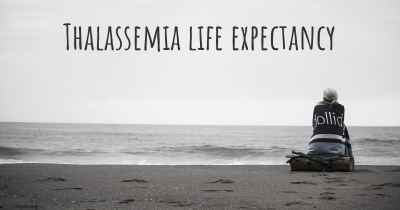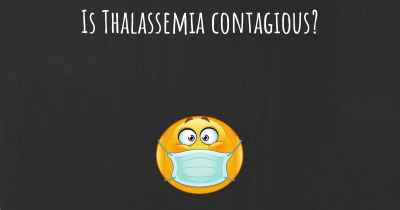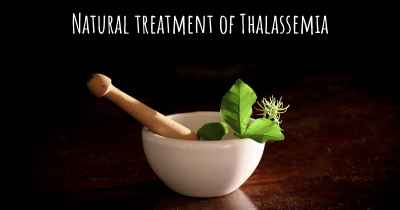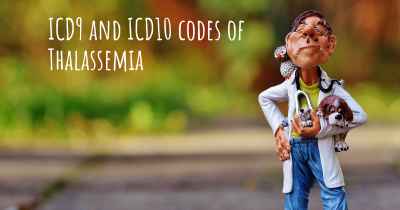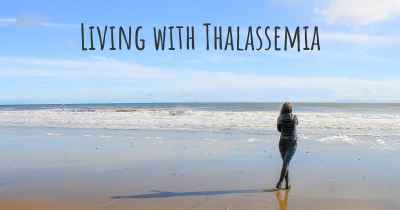Is it advisable to do exercise when affected by Thalassemia? Which activities would you suggest and how intense should they be?
See if it is advisable for people with Thalassemia to practice sports and which ones are the most recommended if you have Thalassemia
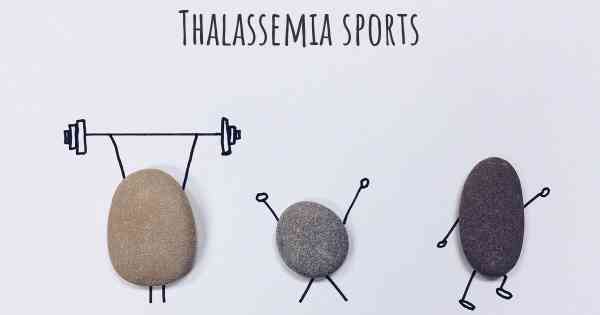
Is it advisable to do exercise when affected by Thalassemia?
Thalassemia is a genetic blood disorder that affects the production of hemoglobin, the protein responsible for carrying oxygen in the blood. People with Thalassemia may experience fatigue, weakness, and shortness of breath due to the reduced oxygen-carrying capacity of their blood. Given these symptoms, it is natural to wonder whether exercise is advisable for individuals affected by Thalassemia.
The Benefits of Exercise for Thalassemia Patients
Engaging in regular exercise can bring several benefits to individuals with Thalassemia. While it may not directly address the underlying cause of the disorder, exercise can help manage the symptoms and improve overall well-being. Here are some key benefits:
- Improved cardiovascular health: Regular exercise can strengthen the heart and improve its efficiency in pumping oxygenated blood throughout the body. This can help alleviate some of the symptoms associated with Thalassemia, such as fatigue and shortness of breath.
- Increased energy levels: Exercise stimulates the release of endorphins, which are natural mood boosters. This can help combat the fatigue and low energy levels often experienced by Thalassemia patients.
- Better bone health: Thalassemia can lead to bone density loss and an increased risk of osteoporosis. Weight-bearing exercises, such as walking or weightlifting, can help strengthen bones and reduce the risk of fractures.
- Enhanced psychological well-being: Regular physical activity has been shown to reduce stress, anxiety, and depression. Thalassemia patients may benefit from the positive impact exercise can have on their mental health.
Choosing the Right Activities
When it comes to exercise, it is important for individuals with Thalassemia to choose activities that are safe and appropriate for their condition. Here are some recommendations:
- Aerobic exercises: Low-impact aerobic exercises like walking, swimming, and cycling are generally safe and beneficial for Thalassemia patients. These activities improve cardiovascular fitness without putting excessive strain on the joints.
- Strength training: Thalassemia patients can also engage in light to moderate strength training exercises to improve muscle strength and overall body composition. It is important to start with light weights and gradually increase intensity under the guidance of a qualified fitness professional.
- Flexibility exercises: Stretching exercises, yoga, or Pilates can help improve flexibility, posture, and joint mobility. These activities can be particularly beneficial for Thalassemia patients who may experience muscle stiffness or joint problems.
Exercise Intensity and Safety Precautions
When determining the intensity of exercise, it is crucial for Thalassemia patients to listen to their bodies and consult with their healthcare team. Here are some general guidelines:
- Start slow: Begin with low-intensity exercises and gradually increase the duration and intensity over time. This allows the body to adapt and reduces the risk of overexertion.
- Monitor fatigue levels: Pay attention to how exercise affects energy levels. It is important to strike a balance between pushing oneself and avoiding excessive fatigue.
- Stay hydrated: Thalassemia patients should drink plenty of fluids before, during, and after exercise to prevent dehydration, which can exacerbate symptoms.
- Take breaks when needed: If feeling excessively tired or experiencing any discomfort, it is important to take breaks or modify the exercise routine accordingly.
- Regular check-ups: Thalassemia patients should have regular check-ups with their healthcare provider to monitor their overall health and discuss any concerns related to exercise.
Conclusion
While exercise can bring numerous benefits to individuals affected by Thalassemia, it is essential to approach it with caution and tailor the activities to individual capabilities. Engaging in regular exercise, under the guidance of healthcare professionals, can help manage symptoms, improve cardiovascular health, increase energy levels, and enhance overall well-being. Remember to listen to your body, start slowly, and make adjustments as needed. With the right approach, exercise can be a valuable addition to the management of Thalassemia.
Bei Thassämie major können gemütliches Radfahren, Schwimmen, Gehen mit leichtem Wanderschritt die Mittel der sportlichen Betätigung sein.
- Symtomfreie Betroffene der Minor-Formen der Thalassämien dürfen Sportarten ihrer Wahl ausüben, sollen aber ihre Leistunggrenzen nicht austesten, da dann Herzschlag oder Schlaganfall drohen können (Thalassämiker haben ein erhöhtes Risiko für beides).
- Bei beiden Formen gilt. Eine Pause ist bis zur Normalisierung des Pulses einzulegen, wenn Schwindelgefühl oder Augenflimmern eintreten.
- For all forms of thalassemia: At least 20 minutes of exercise in fresh air per day!
In Thassemia major, leisurely cycling, swimming, light walking can be the means of exercise.
- Symtom-free persons with the minor forms of thalassemias are allowed to exercise sports of their choice, but should not test their performance limits, since then heartbeat or stroke can threaten (Thalassaians have an increased risk for both). When there are symptoms: Follow advise for thalassemia major.
- For both forms applies: A break should be taken until normalization of the pulse when dizziness or eyelashes occur.
Posted Jan 23, 2018 by Thalassämiehilfe ohne Grenzen e. V.
Bei Thalassämie major können gemütliches Radfahren, Schwimmen, Gehen mit leichtem Wanderschritt die Mittel der sportlichen Betätigung sein.
- Symtomfreie Betroffene der Minor-Formen der Thalassämien dürfen Sportarten ihrer Wahl ausüben, sollen aber ihre Leistunggrenzen nicht austesten, da dann Herzschlag oder Schlaganfall drohen können (Thalassämiker haben ein erhöhtes Risiko für beides).
- Bei beiden Formen gilt. Eine Pause ist bis zur Normalisierung des Pulses einzulegen, wenn Schwindelgefühl oder Augenflimmern eintreten.
- For all forms of thalassemia: At least 20 minutes of exercise in fresh air per day!
In Thalassemia major, leisurely cycling, swimming, light walking can be the means of exercise.
- Symtom-free persons with the minor forms of thalassemias are allowed to exercise sports of their choice, but should not test their performance limits, since then heartbeat or stroke can threaten (Thalassemians have an increased risk for both). When there are symptoms: Follow advise for thalassemia major.
- For both forms applies: A break should be taken until normalization of the pulse when dizziness or flickering of the eyes occur.
Posted Jan 24, 2018 by Jürgen M. 6070
